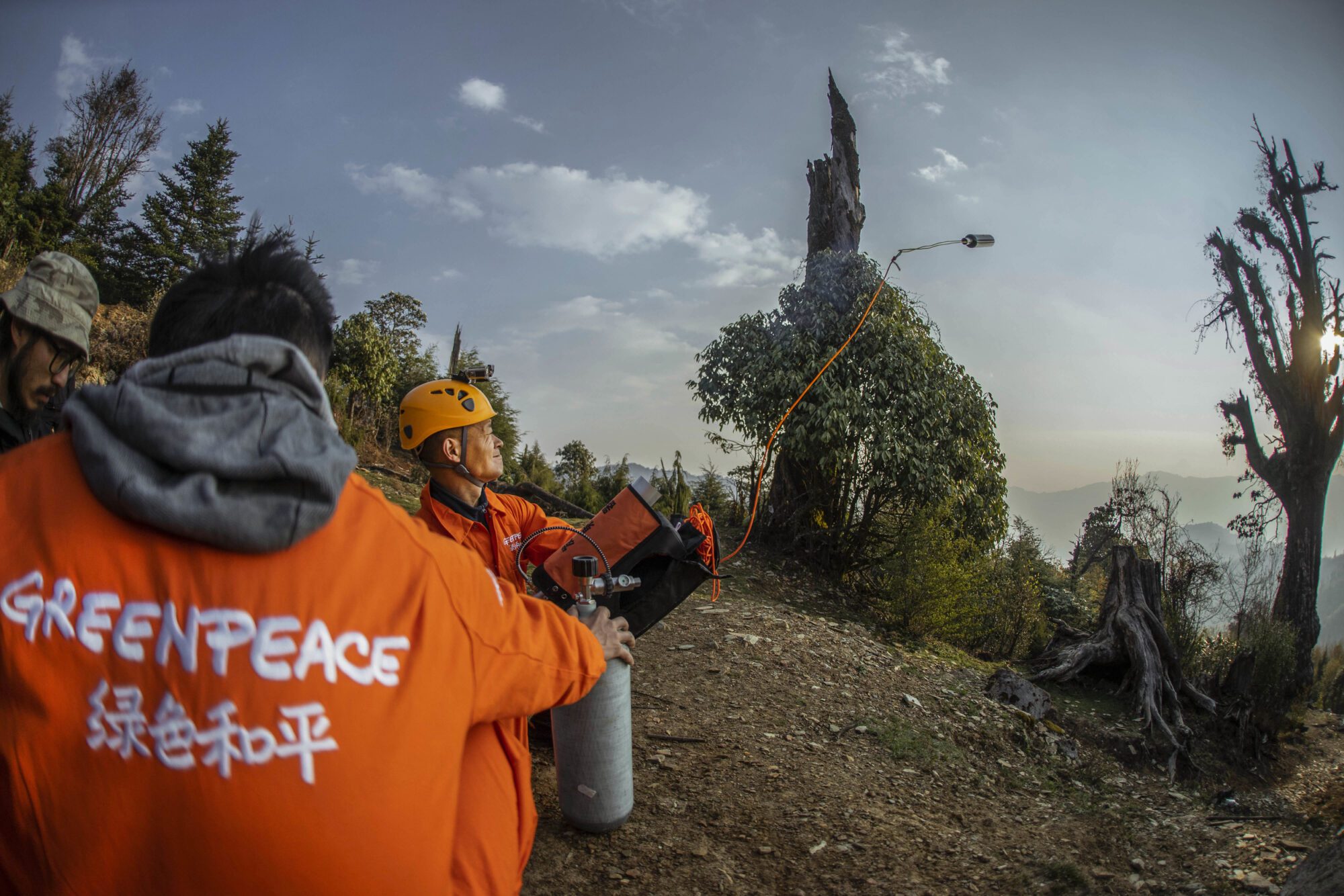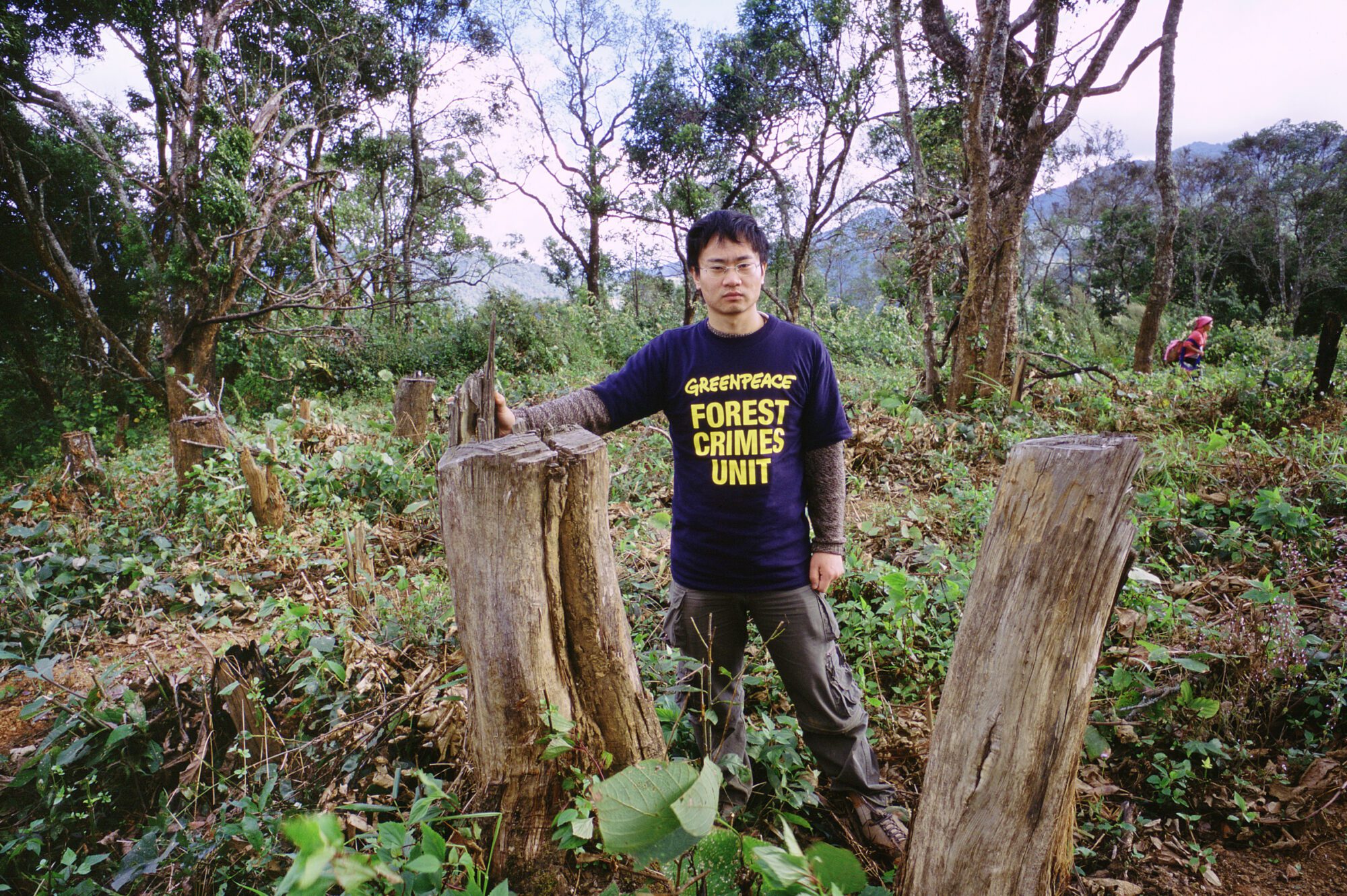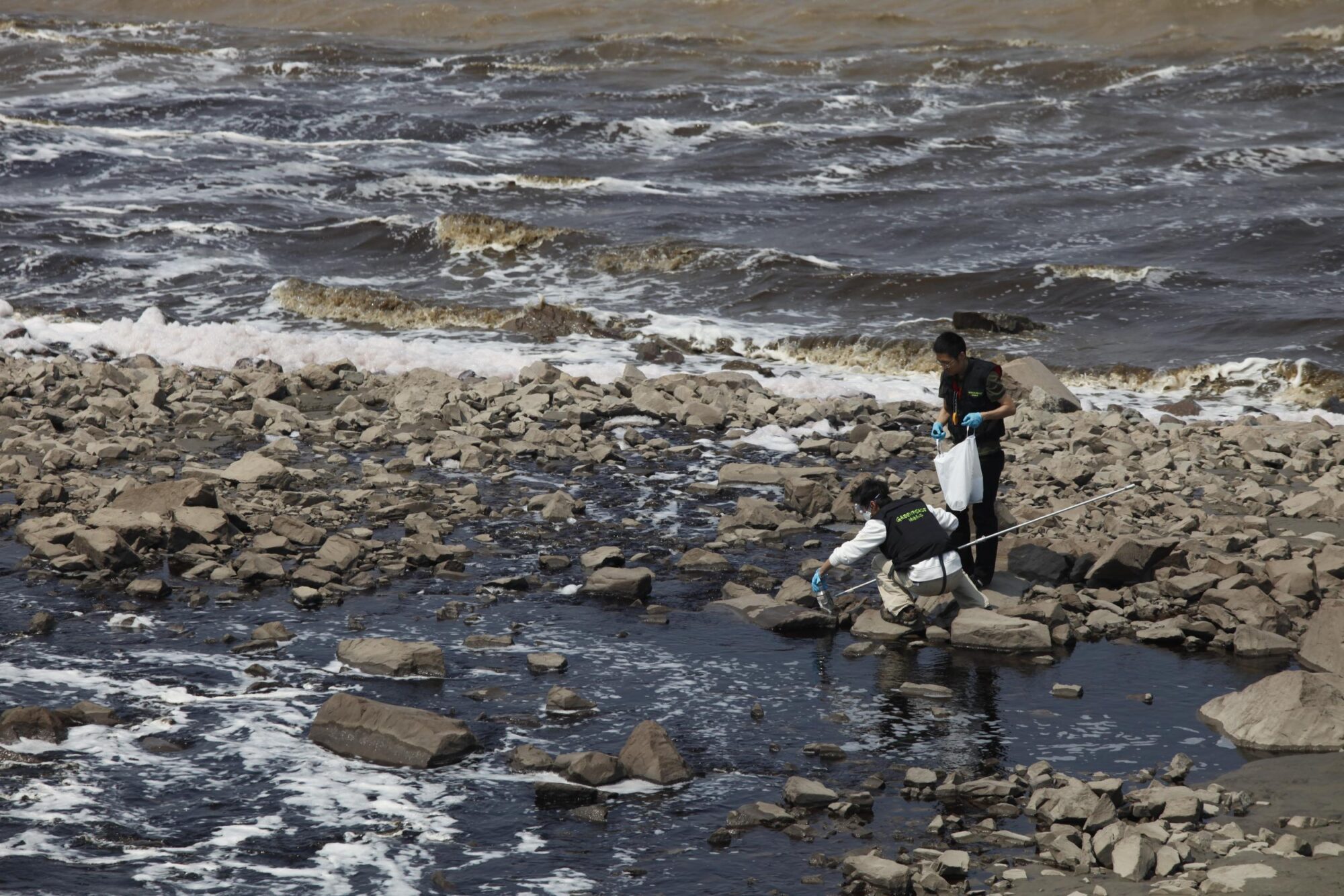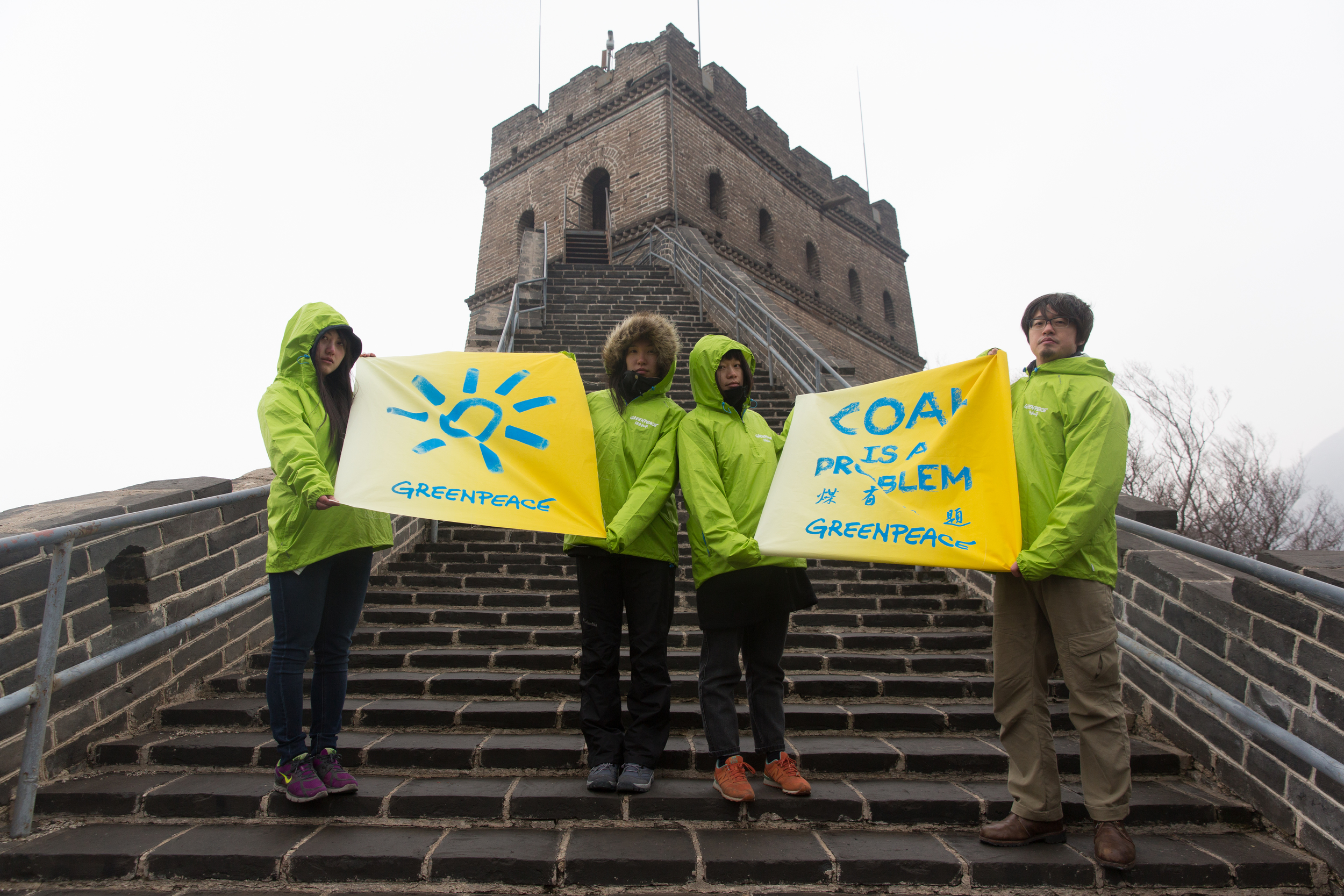Growing from two people in 2002 to over 80 staff today, Greenpeace’s Beijing office has come a long way.
Today we’re focused on putting people front and centre of environmental issues. And always while maintaining an independent voice for science-based solutions.
Here’s a quick look at some of Greenpeace’s biggest wins here in China, and what comes next.
China pledged to cut coal, sparking a new phase of our decades-long coal campaigning
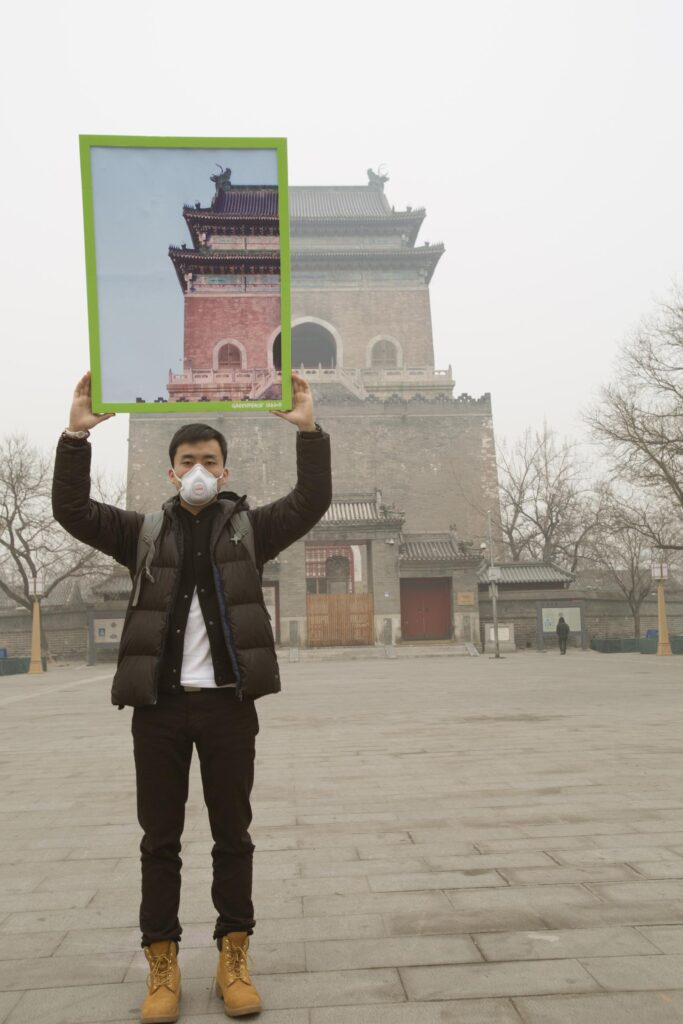
A Greenpeace activist shows “a piece of blue sky” in front of a historical building in China, the Bell Tower. © Yang Di / Greenpeace
In recent years Chinese President Xi Jinping has committed to control the expansion of coal power plants. He has also pledged to stop building new coal power abroad.
Greenpeace China made a unique contribution to this positive change. We created a public record of the coal industry’s continued expansion. Using data-driven analysis, we were able to offer science-based solutions for policymakers.
Our coal campaign started in 2008, with a report pointing out that China was the biggest coal mining and consuming country in the world. Coal burning is the main source of air pollution, often measured through levels of PM2.5 (tiny particulate matter).
As public awareness of air pollution rose, we highlighted the health and climate risk of burning coal. We called for the government to control coal power.
From 2014 to 2018, Greenpeace released a national city-by-city ranking. It compared the concentration of PM2.5 in the air in hundreds of cities across China. In 2013, China issued its Clean Air Action Plan, naming coal as a source of air pollution problems.
For the next decade, we investigated the coal-to-chemical industry, China’s overseas coal funding and coal’s impact on clean water.
Following the government’s 2021 carbon neutrality pledges, we’re now targeting China’s tech giants and car manufacturers. We’re calling on these to reduce their carbon emissions and commit to using 100% renewable energy by 2030.

